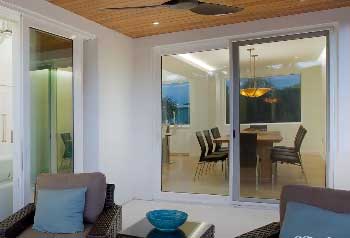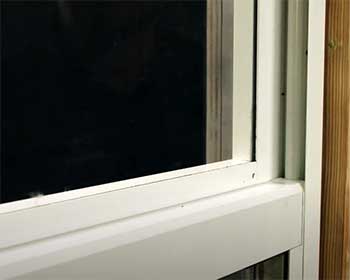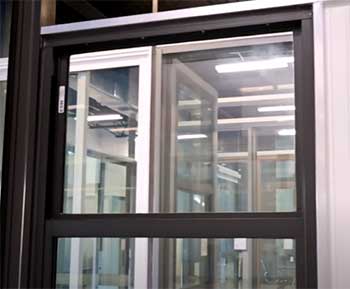When I set out to replace the windows in my Florida home, I wanted ones that could stand up to hurricanes, look good, and not break the bank. That’s when I came across ES Windows and PGT, two heavyweights in the impact window industry.
This article is my journey to compare these brands, breaking down their pros and cons, features, and what makes each shine. By the end, you’ll have a clear picture of which might suit your home best, whether you prioritize durability, style, or budget.
A Brief Comparison Table
| Feature | ES Windows | PGT |
| Durability | High-grade aluminum and laminated glass, Miami-Dade NOA certified | Aluminum and vinyl options, Miami-Dade and Florida Building Code approved |
| Energy Efficiency | Energy Star certified, heat-strengthened glass | Energy Star certified, Low-E glass, argon fill |
| Design Variety | Unique architectural shapes, extensive customization | Wide range of traditional and modern styles |
| Cost | Generally more affordable, features included as standard | Premium pricing, additional costs for upgrades |
| Warranty | 5-10 years depending on components | Limited lifetime on frames, up to 10 years on glass |
| Availability | Growing presence, shorter lead times | Extensive network, longer lead times recently |
| Security | Stainless-steel hardware, strong impact resistance | Enhanced security with laminated glass |
| Maintenance | Low maintenance, durable finishes | May require regular maintenance for optimal performance |
| Noise Reduction | Effective soundproofing | Superior noise reduction, especially in WinGuard line |
Why Impact Windows Matter To Me?
Living in a hurricane-prone area like Florida, I’ve seen what storms can do. Regular windows can shatter under flying debris, leaving your home exposed. Impact windows, like those from ES and PGT, are built to take a beating.
They’re made with laminated glass and sturdy frames to withstand high winds and impacts, keeping my family safe and my home intact. Beyond storm protection, these windows offer energy savings, noise reduction, and even security against break-ins.
Choosing the right brand felt like a big decision, so I wanted to understand what each offered.
ES Windows: My Take On Their Strengths

I was immediately drawn to ES Windows because of their reputation for value.
Based in Colombia, this company has a massive 3.6-million-square-foot manufacturing facility and a growing presence in the U.S.
Their windows are designed to meet Miami-Dade County’s strict Notice of Acceptance (NOA) standards, which means they’re tested to handle the worst hurricanes.
I liked that they use high-grade aluminum and laminated glass, making their windows tough as nails.
One thing that stood out was their energy efficiency. ES Windows are Energy Star certified, and many come with heat-strengthened glass as standard. This helps keep my home cool in the scorching Florida summers, potentially lowering my energy bills.
I also appreciated their focus on customization. Whether I wanted casement, sliding, or awning windows, ES offered a variety of shapes and finishes. Their Prestige line, for example, is all about sleek, modern designs with expansive glass panels for panoramic views—perfect for my dream of a stylish, open living space.
The affordability of ES Windows was a big plus. Many features, like stainless-steel hardware and designer glass, come standard, which means I wouldn’t have to pay extra for upgrades. Their lead times are also shorter than some competitors, which is great if you’re eager to get your project done.
However, I noticed their warranty periods are shorter—typically 5 to 10 years depending on the component. That gave me pause, but their durability and NOA certification reassured me that these windows are built to last.
On the downside, ES Windows’ distribution network isn’t as extensive as some older brands. If you’re not in a major market like South Florida, you might need to hunt for a supplier. Still, their customer service focus and growing presence made me feel confident they’re a solid choice.
PGT: What I Found Impressive

PGT, founded in 1980 in Venice, Florida, is practically a household name in the impact window world.
With over 40 years of experience, they’ve worked closely with state authorities to shape building codes, which gave me confidence in their expertise.
Their flagship WinGuard line is a standout, designed to meet Miami-Dade and Florida Building Code standards. These windows can handle winds up to 175 miles per hour, which is critical for someone like me living in a storm-prone area.
PGT’s product variety is another strength. They offer aluminum and vinyl frames, with lines like WinGuard, EnergyVue, and PremierVue catering to different needs. Whether I wanted a single-hung window for a traditional look or a casement for maximum ventilation, PGT had options.
Their EnergyVue line, with Low-E glass and argon fill, is a big win for energy efficiency, helping me save on cooling costs while keeping my home comfortable.
I was also impressed by PGT’s noise reduction capabilities. Living near a busy street, I want windows that can muffle traffic sounds, and PGT’s laminated glass does just that. Their windows also add a layer of security—laminated glass is tough for intruders to break through, which gave me peace of mind.
However, PGT’s premium reputation comes with a higher price tag. Some features, like advanced Low-E coatings, cost extra, unlike ES Windows’ standard inclusions.
Maintenance can also be a factor; PGT windows may need regular upkeep to stay in top shape, and repairs can be pricey due to specialized components. Their extensive dealer network is a plus, but recent supply chain issues have led to longer lead times, which could be a hassle if you’re on a tight schedule.
Key Differences Between ES And PGT Windows
- Digging into Durability
Durability is non-negotiable when you’re facing Category 5 hurricanes. Both ES and PGT deliver here, but in slightly different ways. ES Windows use high-grade aluminum and laminated glass, rigorously tested to meet Miami-Dade NOA standards.
I found their construction reassuring, especially the stainless-steel hardware that resists corrosion in salty coastal air. This durability means I wouldn’t have to worry about replacing windows anytime soon, even in brutal weather.
PGT’s durability is equally impressive, with their WinGuard line standing out. These windows are built to withstand impacts from flying debris and extreme wind pressures. PGT’s aluminum and vinyl frames are designed for longevity, with a life expectancy of 20-30 years with proper care.
However, I noticed that vinyl frames might require more maintenance than ES’s aluminum ones, especially in harsh coastal environments where vinyl can degrade over time.
Both brands offer peace of mind, but ES’s corrosion-resistant hardware gave me a slight edge in confidence for long-term durability in my coastal home.
- Energy Efficiency: Keeping My Bills in Check

As someone who cringes at high energy bills, I paid close attention to how these windows could save me money.
ES Windows impressed me with their Energy Star certification and standard heat-strengthened glass.
This glass reflects heat, keeping my home cooler without overworking the AC.
Their tight seals also prevent air leaks, which is a big deal in Florida’s humid climate.
PGT’s EnergyVue and PremierVue lines are also Energy Star certified, with Low-E glass and argon fill that enhance insulation. I liked that PGT uses Super Spacer technology to reduce condensation and energy loss at the glass edges.
In my research, PGT’s U-Factors (a measure of heat transfer) were slightly better on some models, especially their triple-glazed options. However, I had to weigh this against the higher cost of those upgrades.
Both brands are excellent for energy savings, but ES’s standard features made it feel like I was getting more bang for my buck.
- Design and Customization: Making My Home Pop
I’m a bit of a design nerd, so I wanted windows that would make my home look amazing. ES Windows won me over with their unique architectural shapes. Their Prestige and Alessia lines offer sleek, modern designs with crisp lines and large glass panels.
I could customize colors, finishes, and hardware to match my home’s vibe, whether I wanted a bold black frame or a classic white one.
PGT offers a ton of variety too, with 14 window styles in their WinGuard line alone. From single-hung to architectural windows, they cover traditional and modern aesthetics. Their customization options let me tweak frame colors, glass tints, and grid styles.
However, I found ES’s designs a bit more innovative, especially for homeowners like me who want a standout look. PGT’s styles, while versatile, leaned more toward classic functionality.
- Cost and Value: What’s My Wallet Saying?
Budget is always a factor, and I wanted to make sure I was getting the most for my money. ES Windows stood out as the more affordable option.
Their standard inclusion of premium features like heat-strengthened glass and stainless-steel hardware meant I wasn’t nickel-and-dimed for upgrades. For a typical single-hung window, I estimated costs around $400-$500, depending on the size and customization.
PGT, on the other hand, is pricier. A single-hung WinGuard window might run $485-$600, and premium upgrades like advanced Low-E coatings or custom tints can push costs higher.
While PGT’s quality justifies the price for some, I appreciated ES’s value-driven approach, especially since I didn’t have to sacrifice durability or efficiency.
- Warranty and Support: Who’s Got My Back?
Warranties matter when you’re investing in something as critical as impact windows. ES Windows offers solid warranties, typically 5 years for most components and up to 10 for frames.
I wondered if the shorter warranty reflected confidence in their durability or a potential weak spot. Still, their NOA certification and customer-focused service made me feel secure.
PGT’s warranties are more extensive, often including limited lifetime coverage on frames and 10 years on glass components. Their long history and established dealer network gave me confidence that support would be easy to access.
However, I heard mixed feedback about PGT’s warranty claims process, with some homeowners noting delays or high costs for glass replacements.
- Availability and Lead Times: Getting the Job Done
I’m not the most patient person, so lead times were a big deal. ES Windows has a growing presence, especially in South Florida, and their shorter lead times were a plus. I could potentially get my windows installed faster, which is great if you’re racing against hurricane season.
PGT’s extensive dealer network means they’re widely available across the U.S., but recent supply chain challenges have caused longer lead times. Some homeowners reported waits of several months, which could be a dealbreaker if you need windows ASAP.
For me, ES’s quicker turnaround was a point in their favor.
- Security and Noise Reduction: Peace of Mind and Quiet

Living near a busy road, I wanted windows that could keep noise out and intruders at bay.
Both ES and PGT deliver strong security with laminated glass that’s tough to break.
ES’s stainless-steel hardware adds an extra layer of protection, which I appreciated for my ground-floor windows.
PGT’s WinGuard line is particularly strong in noise reduction, thanks to its thick laminated glass.
I read reviews from homeowners who noticed a significant drop in outside noise, which would be a game-changer for my sleep quality. ES windows also reduce noise effectively, but PGT seemed to have a slight edge here.
- Maintenance: How Much Work Is Involved?
I’m not a fan of high-maintenance home projects, so I looked at what each brand requires. ES Windows are low-maintenance, with durable aluminum frames and corrosion-resistant hardware. A quick clean now and then keeps them looking great, which suits my busy lifestyle.
PGT windows, especially vinyl models, may need more upkeep. Vinyl can degrade in harsh coastal climates, and I heard that some PGT windows require regular checks to maintain performance.
Repairs can also be costly due to specialized parts, which made me lean toward ES for simplicity.
Frequently Asked Questions (FAQ)
It depends on your needs. ES Windows offer great value and unique designs, while PGT provides a broader range and established reliability. Compare your budget and priorities.
No single brand is “best.” ES and PGT both meet strict standards, but ES is more budget-friendly, while PGT offers extensive options and a strong reputation.
Yes, PGT is a trusted brand with over 40 years of experience, known for durable, energy-efficient windows that meet rigorous hurricane standards.
PGT offers more variety and a wider network, while CGI focuses on premium, elegant designs. PGT may be better for versatility, CGI for aesthetics.
My Final Thoughts On Choosing Between ES And PGT
After weighing all the factors, I found that both ES Windows and PGT are excellent choices, but they cater to slightly different priorities. ES Windows won me over with their affordability, standard premium features, and unique designs.
If you’re like me and want a cost-effective, stylish option with solid durability, ES is hard to beat.
PGT, with its long-standing reputation and extensive product range, is ideal if you value brand reliability and are willing to pay a premium for it. Ultimately, your choice depends on your budget, design preferences, and how much you value quick availability versus an established service network.
Whichever you pick, you’re investing in windows that will protect your home and enhance its value for years to come.
